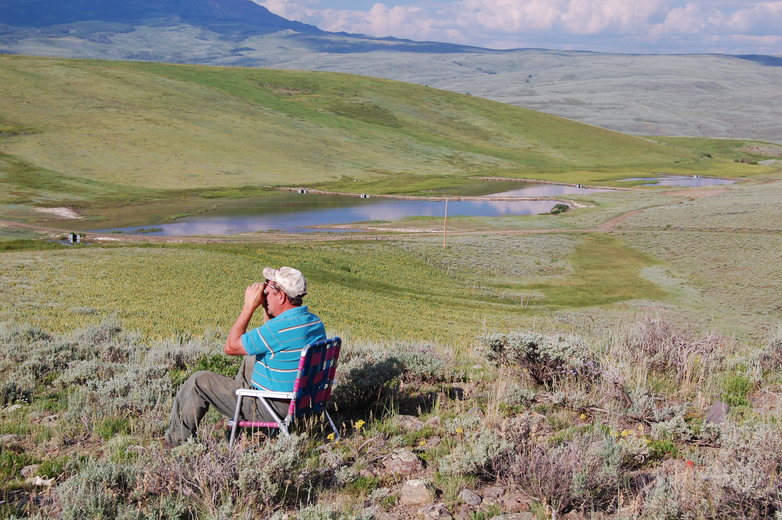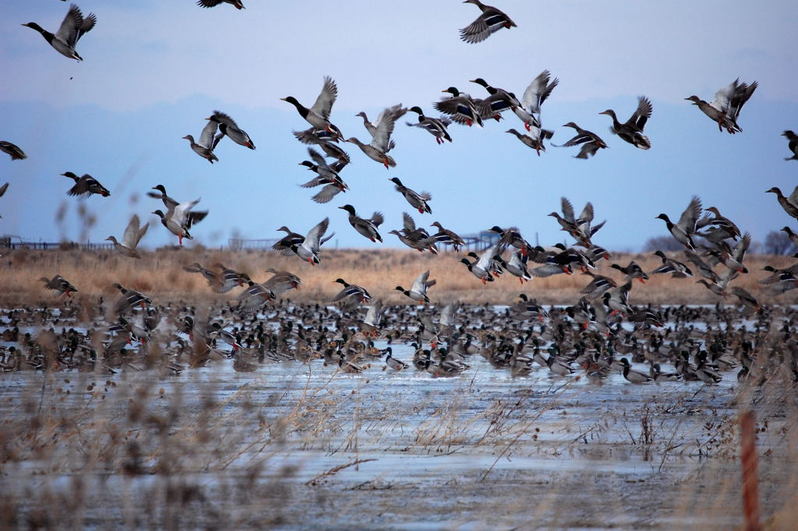by Matt Filsinger

Supporters of the Federal Duck Stamp are aware that funds go to the Migratory Bird Conservation Fund (MBCF) to secure fee-title and easement acquisition in the National Wildlife Refuge System (NWRS). Besides the MBCF, there are also familiar efforts through the Land and Water Conservation Fund (LWCF) and parts of the Farm Bill that are very important for habitat security, especially for birds. However, readers should be familiar with other government programs that help restore and enhance vital habitat for birds and other wildlife. The Partners for Fish and Wildlife (Partners) Program is a small but complementary effort to support on-the-ground activities on private lands.
Partners officially started in 1987, with its beginnings grounded in waterfowl management. One of the most important building blocks of the Partners Program was the U.S. Fish and Wildlife Service’s (FWS) Mid-Continent Waterfowl Management Project (MCWMP). Beginning in the late 1970s, the MCWMP had a specific focus to increase waterfowl populations in a pilot area near Fergus Falls, Minnesota, through the use of innovative management techniques. Wetland drainage and the loss of upland nesting habitat were occurring at alarming rates during that time. In addition to FWS assets, Ducks Unlimited, Inc. (DU) was the primary partner in this undertaking, providing a wealth of scientific, technical assistance, and on-the-ground support.

Out of this cooperative arrangement, a team comprised of FWS NWRS employees and DU biologists was formed. Looking at a landscape-scale, they quickly realized that to make a positive impact on waterfowl populations they needed to go beyond the traditional fee-title NWRS holdings and to better engage private landowners. Part of their vision included voluntary habitat restoration on privately-owned farms and ranches. Small prairie potholes were the primary focus of wetland restoration efforts and croplands were reseeded back to native grass to provide nesting cover. A connected patchwork, much like a patterned quilt, started to emerge with the private lands projects located in close proximity to federal and state lands. The biologists started to gain trust and credibility within the local community, and in 1987 the Partners Program formed.
The model was quickly adopted in other areas of the Prairie Pothole Region (PPR), and it eventually spread throughout the nation. From those humble beginnings in the PPR, the Partners Program has grown to 260 biologists who fulfill habitat restoration needs in all 50 states and U.S. territories. Since 1987, the program has completed over 50,000 projects and restored 4 million upland acres, 1.5 million wetland acres, and over 12,000 miles of stream habitat. The Program has worked with over 45,000 private landowners and 5,000 partner organizations, and has had a leveraging ratio of 4:1 wherein the return on investment of federal taxpayer dollars is maximized. Essentially, for every single dollar provided to Partners, they find four other non-Service dollars to complete projects.
There are several guiding principles of the Partners Program, but none is more important than the recognition that success inherently is a product of working cooperatively with people. Of all the variables in the complicated equations driving our ecosystems, none is more important than the human element. Thirty years of this Program is proof that people on the land are the key to finding common sense solutions to complex ecological problems!
Matt Filsinger is National Team Lead, Partners for Fish and Wildlife Program.
A version of this article first appeared in the 10 February 2017 issue of Wingtips.